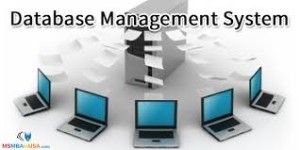 111. Explain a join between tables
111. Explain a join between tables
A join allows tables to be linked to other tables when a relationship between the tables exists. The relationships are established by using a common column in the tables and often uses the primary/foreign key relationship.
112. Describe and contrast a trigger and a procedure.
Triggers are stored and controlled in the DBMS. A trigger is executed automatically when a condition is met (INSERT, UPDATE, or DELETE). A procedure is also stored in a database. A procedure is not executed automatically.
113. Briefly describe an outer join.
An outer join includes the records that match and those that do not have a matching value in another table. Outer joins can be a LEFT outer join (includes all records from the first table listed) or a RIGHT outer join (includes all records from the second table listed). Outer joins are not easily used with more than two tables.
114. Describe a subquery.
A subquery is a query that is composed of two queries. The first query (inner query) is within the WHERE clause of the other query (outer query). In some cases the inner query provides results for the outer query to process. In other cases, the outer query results provide results for the inner query (correlated subquery).
115. Describe the difference between embedded and dynamic SQL.
Embedded SQL is the process of including hard coded SQL statements. These statements do not change unless the source code is modified. Dynamic SQL is the process of generating SQL on the fly. The statements generated do not have to be the same each time
116. Explain the difference between two and three-tier architectures.
A three-tier architecture includes a client and two server layers. The application code is stored on the application server and the database is stored on the database server. A two-tier architecture includes a client and one server layer. The database is stored on the database server.
117. Describe and contrast SQL and QBE.
QBE is a direct-manipulation database language that uses a graphical approach to query construction. Some database systems translate QBE queries into SQL. QBE does not adhere to a standard but SQL does. Both SQL and QBE are relational database languages.
118. Describe ODBC
ODBC is a standard that contains an interface that provides a common language for application programs to access and process SQL databases. In order to use ODBC, a driver, server name, database name, user id, and password are required. ODBC is important for Internet applications and has gained wide acceptance.
119. Compare a thin and a fat client.
A fat client is a PC that is responsible where most processing occurs on the client rather than the server. Some of the fat client activities include processing, presentation logic, and business rules logic. A thin client is a PC where only limited processing occurs. In these cases, more processing should occur on the application server.
120. Describe some reasons that someone familiar with Microsoft Access will want to learn VBA.
You can perform more complex functions and error handling can be accommodated by VBA. VBA code will execute faster since code runs faster than macros and maintenance is easier because VBA modules are stored with the forms and reports. Reading VBA is easier because you can see the entire code. Finally, you can pass parameters and use OLE automation better.